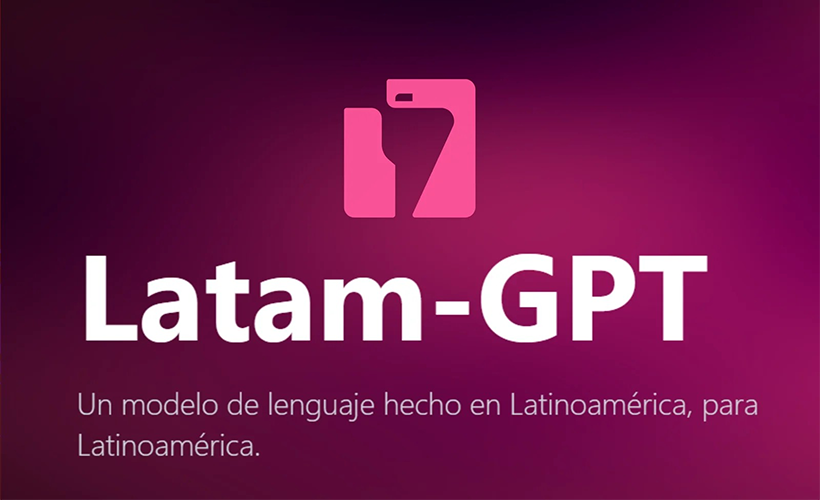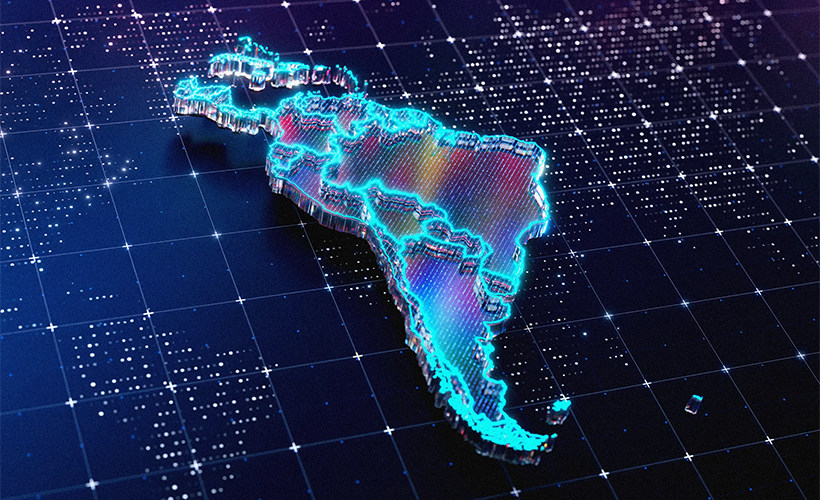
Free and Collaborative AI: This Is How Latam-GPT Presents Itself as a Regional Alternative
Latam-GPT is emerging as the first large-scale artificial intelligence model created in and for Latin America, with an open and collaborative approach.
Artificial intelligence is advancing rapidly, and Latin America does not want to be left behind in this transformation. A new project called Latam-GPT aims to change the landscape by developing a large-scale language model designed and trained specifically for the region. The initiative, open and collaborative in nature, marks a milestone by prioritizing technological independence and the strengthening of a homegrown digital ecosystem.
Led by Chile’s National Center for Artificial Intelligence (CENIA), this model seeks to address a historic need: to have technological tools that understand Latin American contexts, languages, and realities. With a community-driven approach and a network of regional partnerships, Latam-GPT is positioning itself as a key player in building AI that responds to local needs.
The project, which is preparing to launch its first version in 2025, aims to compete in capability with major international models — but with a crucial difference: it is designed from and for Latin America, using data, references, and nuances unique to its countries.

The project, which is preparing to launch its first version in 2025, aims to compete in capability with major international models.
Latam-GPT – A Model Born for the Region
Latam-GPT does not aim to imitate or directly challenge giants like OpenAI, Google, or Meta. Its goal is different: to become a useful tool for the everyday lives of millions of Latin Americans. The model has been trained on more than eight terabytes of information and a corpus of 2.6 million documents collected from 20 countries in the region and from Spain. Brazil, Mexico, Colombia, and Argentina account for a large portion of this data, reflecting their market size and level of digitalization.
With 50 billion parameters, the model’s scale is comparable to GPT-3.5. This allows it to perform advanced tasks such as translation, reasoning, and understanding cultural contexts. The difference is that Latam-GPT will be able to respond with deeper knowledge on topics specific to Latin America—something other models still struggle to do accurately.

With 50 billion parameters, the model’s scale is comparable to GPT-3.5.
The Power of Collaboration
One of Latam-GPT’s defining features is its open and collaborative nature. More than 33 academic and technological institutions are participating in the effort, sharing data, infrastructure, and expertise. The vision is for the model not to be the exclusive tool of any one country or company, but a shared resource that can be adapted to key sectors such as education, health, agriculture, and culture.
Its open-source nature also aims to democratize access. Universities, local governments, or startups will be able to tailor the model to their needs, creating specific applications without relying on external providers. This approach, project leaders say, could become a path to reducing the global technological gap.

More than 33 academic and technological institutions are participating in the effort, sharing data, infrastructure, and expertise.
Latin American Supercomputing Power
Training a model of this magnitude requires high-level infrastructure. To that end, Chile has launched a supercomputing center at the University of Tarapacá in Arica. With a $10 million investment, the cluster includes 12 nodes equipped with next-generation Nvidia H200 GPUs, enabling large-scale model training without relying solely on international cloud services.
This development represents an unprecedented step in the region — it’s the first time computing power of this level has been developed for AI research purposes. Beyond the model itself, the infrastructure opens the door to future projects requiring high computational capacity, from scientific simulations to complex data analysis.

Chile has launched a supercomputing center at the University of Tarapacá in Arica.
Toward Technological Sovereignty
The launch of Latam-GPT’s first version this year will mark only the beginning of a more ambitious journey. The roadmap includes the creation of larger models and integration with multimodal technologies that include image and video. The idea is that by 2030, the region will have a robust ecosystem that not only consumes AI but also produces it.
A successful scenario would mean Latin American students have access to educational tools that understand their contexts, farmers can use AI tailored to their climate needs, and healthcare systems incorporate models designed with local realities in mind. Ultimately, Latin America would move from being merely a user of imported technologies to becoming a creator of knowledge and solutions.
Latam-GPT is not just a language model—it is a collective effort to ensure that the technological revolution of artificial intelligence also has Latin American roots and voice.
Links
- A language model made in Latin America, for Latin America – Latam-GPT
- Sell pre-owned AI device online – iGotOffer
AI for Good Case 3: LATAM-GPT: A Culturally Sensitive Large Language Model for Latin America [Video]
Video uploaded by pijipvideo on June 28, 2025.






Facebook
Twitter
RSS